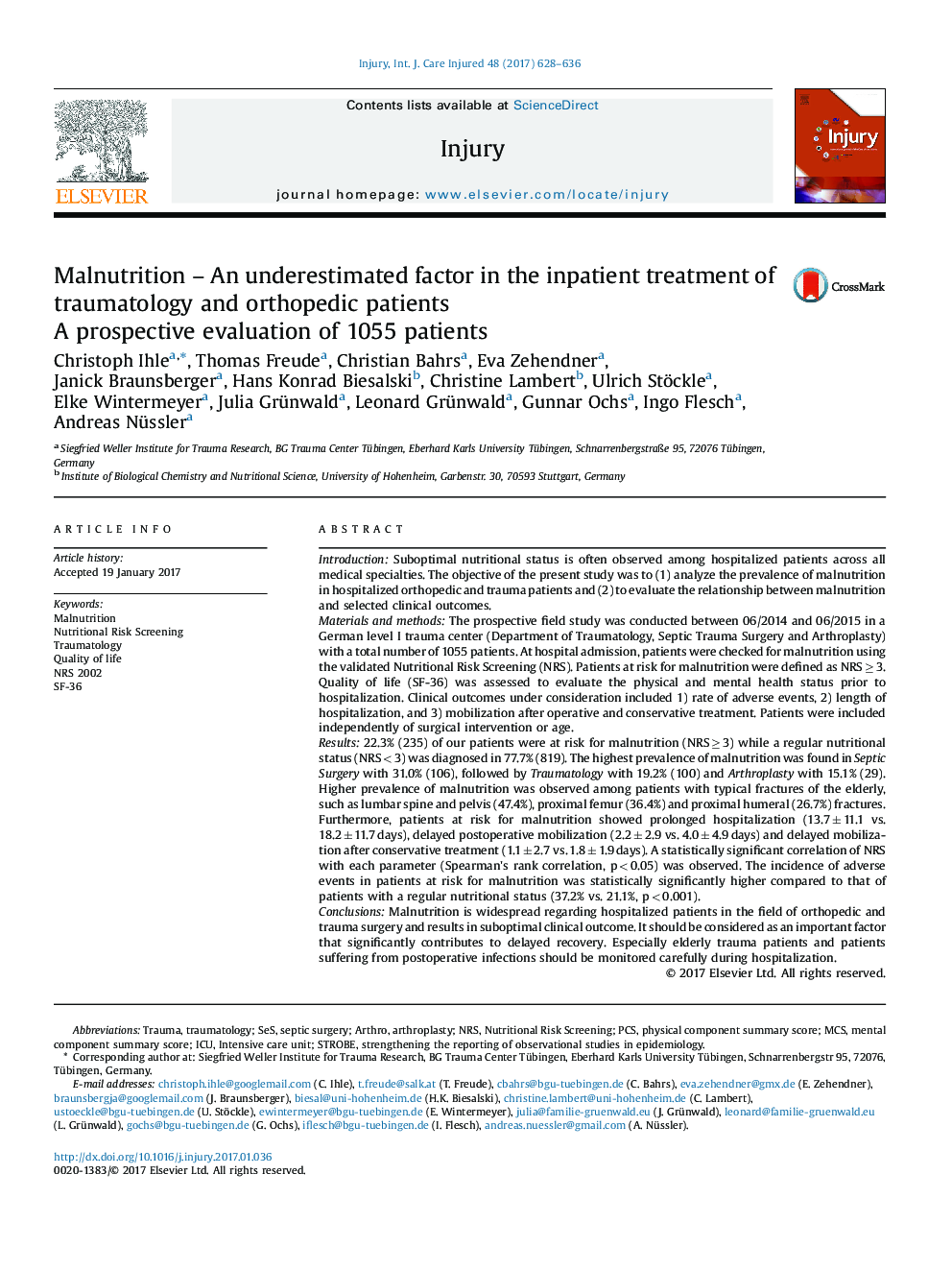| کد مقاله | کد نشریه | سال انتشار | مقاله انگلیسی | نسخه تمام متن |
|---|---|---|---|---|
| 5652653 | 1407223 | 2017 | 9 صفحه PDF | دانلود رایگان |

IntroductionSuboptimal nutritional status is often observed among hospitalized patients across all medical specialties. The objective of the present study was to (1) analyze the prevalence of malnutrition in hospitalized orthopedic and trauma patients and (2) to evaluate the relationship between malnutrition and selected clinical outcomes.Materials and methodsThe prospective field study was conducted between 06/2014 and 06/2015 in a German level I trauma center (Department of Traumatology, Septic Trauma Surgery and Arthroplasty) with a total number of 1055 patients. At hospital admission, patients were checked for malnutrition using the validated Nutritional Risk Screening (NRS). Patients at risk for malnutrition were defined as NRS â¥Â 3. Quality of life (SF-36) was assessed to evaluate the physical and mental health status prior to hospitalization. Clinical outcomes under consideration included 1) rate of adverse events, 2) length of hospitalization, and 3) mobilization after operative and conservative treatment. Patients were included independently of surgical intervention or age.Results22.3% (235) of our patients were at risk for malnutrition (NRS â¥Â 3) while a regular nutritional status (NRS < 3) was diagnosed in 77.7% (819). The highest prevalence of malnutrition was found in Septic Surgery with 31.0% (106), followed by Traumatology with 19.2% (100) and Arthroplasty with 15.1% (29). Higher prevalence of malnutrition was observed among patients with typical fractures of the elderly, such as lumbar spine and pelvis (47.4%), proximal femur (36.4%) and proximal humeral (26.7%) fractures. Furthermore, patients at risk for malnutrition showed prolonged hospitalization (13.7 ± 11.1 vs. 18.2 ± 11.7 days), delayed postoperative mobilization (2.2 ± 2.9 vs. 4.0 ± 4.9 days) and delayed mobilization after conservative treatment (1.1 ± 2.7 vs. 1.8 ± 1.9 days). A statistically significant correlation of NRS with each parameter (Spearman's rank correlation, p < 0.05) was observed. The incidence of adverse events in patients at risk for malnutrition was statistically significantly higher compared to that of patients with a regular nutritional status (37.2% vs. 21.1%, p < 0.001).ConclusionsMalnutrition is widespread regarding hospitalized patients in the field of orthopedic and trauma surgery and results in suboptimal clinical outcome. It should be considered as an important factor that significantly contributes to delayed recovery. Especially elderly trauma patients and patients suffering from postoperative infections should be monitored carefully during hospitalization.
Journal: Injury - Volume 48, Issue 3, March 2017, Pages 628-636